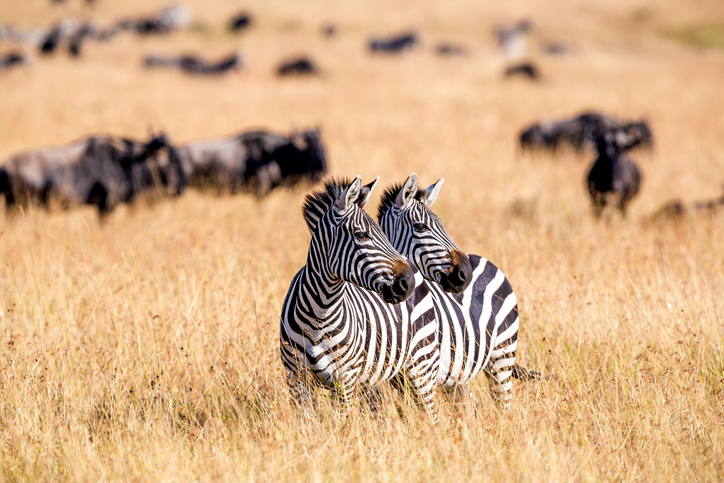Women in low-income countries are often very vulnerable to the impacts of climate change. But they are also in a strong position to protect their communities from these impacts – provided they have the resources. This article explores how improving women’s access to climate finance can empower vulnerable communities against climate disasters in Uganda.
Communities worldwide are under immediate threat from climate change, particularly those in vulnerably situated countries like Uganda. The impacts of climate change are widespread, affecting agriculture, water resources, and overall socio-economic stability.
Uganda’s National Development Plan states that climate change threatens Uganda’s ambition to transform into a competitive upper middle-income nation by 2040. In 2019, Uganda was ranked 85th out of 149 countries in the German Watch Global Climate Risk Index of 2017.
It has been calculated that inaction will cost between USD 273 and USD 437 billion between the years 2010 and 2050. Building resilience, adjusting to shifting conditions, and reducing the negative effects of climate change all depend on having access to climate finance.
This finance needs to target the most vulnerable communities for support to be effective and equitable. Within low-income communities, women are frequently more vulnerable to the effects of climate change. This article explores how better access to climate finance will not only support women but strengthen communities as a whole and support national economic development.
Women’s vulnerability to climate change in Uganda
The impact of climate financing on vulnerable populations in Uganda depends significantly on gender. This is because the effects of climate change and access to climate finance may differ for men and women.
If we look at differences in how men and women spend their time, for example, women in Uganda are frequently more vulnerable to climate change as a result of risks associated with their work in cooking, water collection, and agriculture.
Initiatives that address the unique needs and vulnerabilities of women should be given priority in climate finance.
Women’s limited access to resources, particularly climate funding, also makes it difficult for them to adopt climate-resilient practices. Women frequently have less access to technology, land, and credit. To address the issues posed by climate change, a comprehensive change in behavior, technology, and recognition of women’s central role in agriculture is necessary. Many of the obstacles faced by women farmers in agriculture could be addressed by labor and time-saving technologies. These would help rural women boost agricultural productivity in a changing climate – with benefits for the whole community and national economy. Labor-saving technology and practices can improve women’s income by reducing the burden of household chores and creating opportunities for economic empowerment. For example, cleaner, more efficient biomass stoves, can reduce the time spent on cooking and collecting firewood, freeing up time for other activities. Similarly, modern agricultural technologies can empower women in rural areas by making farming more efficient and by reducing the physical labor involved in agriculture.
Climate funding can help women’s education and capacity-building initiatives, giving them the tools they need to actively participate in resilience-building initiatives and adjust to climate change. However, many training programs and capacity-building activities on disaster prevention and preparedness target more men than women.
Women’s knowledge is also typically under-represented in evidence bases for disaster mitigation and prevention. Women typically possess a greater understanding of their surroundings, which could be used to improve disaster preparedness initiatives that benefit both men and women, such as environmental management programs and radio-delivered early warning signals.

How to help communities access climate finance.
In Uganda, empowering communities to access climate finance is not only essential for tackling problems brought about by climate change. It will also improve community resilience by advancing sustainable development and enhancing the welfare of disadvantaged groups.
To support the development of women and girls in the context of climate change and the development of gender responsive practices, Uganda’s Ministry of Water and Environment conducts participatory gender assessments. This involves examining gender differences, along with other social factors, to identify shocks, cycles, and trends (vulnerability), and assessing the results to help the institutions create mitigation, preparedness, and preventive programs that reduce vulnerability and increase resilience.
These aim to improve the effectiveness, as well as sustainability, of projects by incorporating gender considerations into climate financing initiatives. They have ultimately enabled greater resilience for women and girls in the face of climate change.
Disaster Risk Management (DRM) also plays a crucial role in making funds available for at-risk communities. Societies may prepare for and respond to catastrophes more effectively by investing in disaster risk reduction and management, which will ultimately lessen the impact of disasters and foster a safer and more resilient future. To effectively implement DRM priorities and increase resilience to climate-related disasters, access to climate finance is crucial.
Uganda’s DRM priorities are outlined in the nation’s Disaster Management Policy, which was adopted in 2011. These priorities include bolstering institutions and funding for climate change adaptation, creating multi-sectoral adaptation plans, putting programs in place to lessen the socioeconomic impact of natural disasters and climate change, and boosting community resilience to climate change. Municipal leaders are now able to create their own Disaster Prevention, Mitigation, and Response Committees, as well as create and carry out their own emergency and DRM plans, thanks to this support. Bilateral partners also offer capacity building help for disaster preparedness and management as well as post-disaster recovery, intended to increase women’s and vulnerable groups’ access to financing while acknowledging the difficulties these groups have after disasters. For instance, it makes sure that these groups are actively considered in risk assessment and resilience strategy development. This helps communities better prepare for disasters.
Climate finance has the potential to either worsen already existing gender gaps or to be an effective instrument for advancing resilience, gender equality and sustainable development for all members of vulnerable populations. Climate finance projects must, therefore, incorporate gender-sensitive measures for vulnerable communities. Women and disadvantaged communities must also be active players in climate financing projects. These steps will maximize the impact of resources and climate resilience initiatives, while achieving increased empowerment, equity, and inclusivity. Finally, while progress is being made, much more needs to be done to keep improving women’s access to finance in Uganda and around the world.






